Two of the big themes at the North American International Auto Show in Detroit this week were pickup trucks and environmentally friendly cars.
More surprisingly, automakers are trying to combine them.
Those two concepts – size and fuel efficiency – have rarely been compatible in the past, but 2015 may be the year they finally reach a détente. The irony is that it’s also the year that oil is at $45 a barrel, making gas unusually cheap and lessening demand for electric vehicles. Detroit, as has often been the case lately, may be late to the party.
The new alliance between big cars and fuel efficiency was apparent in a surprising twist from Hyundai. The automaker followed its eco-vehicle presentation with the unveiling of something unusual: a vehicle that blurs the line between car and truck. The Santa Cruz “crossover truck” concept is aimed at a customer group Hyundai calls “urban adventurers”. The front looks like a car, with two doors and seating for five, but it has a small, extendable pickup bed out back.
Dave Zuchowski, chief executive of Hyundai Motor America, said at a press conference Monday that the car would be as useful to outdoor sports enthusiasts as it would be to weekend gardeners and schleppers of antique furniture. In short, it appears to be a vehicle for millennials who are just settling into adult life.
“It may not be the vehicle the auto industry expects, but it’s the vehicle these customers want and demand,” he said.
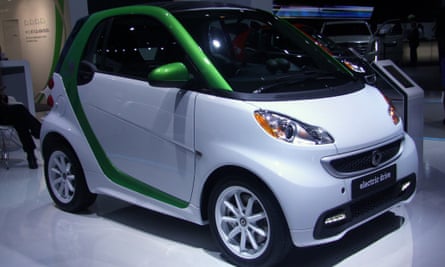
This hybrid, fuel-efficient mullet of a car – business in the front, party in the back – is a bid to court drivers of pickup trucks, which, after years of being relegated to the work-vehicles category, are having a renaissance.
Domestic full-size pickup trucks took the top three sales slots in the US, according to the Wall Street Journal.
The Ford F-150, long the bestseller among pickups, is followed in sales by the Chevrolet Silverado and the Ram.
The three models each outsold everything else on the market, including popular midsize sedans like the Honda Accord and Ford Fusion and crossovers like the Honda CR-V and Ford Escape.
Automakers have been playing an aggressive game of one-upmanship for full-size pickup trucks. Ram introduced an acclaimed new model for 2013, General Motors followed suit for the 2014 model year, and Ford introduced a mostly aluminum-bodied F-150 in Detroit last winter for the 2015 model year. This year’s show began with the F-150 claiming the North American Truck/Utility of the Year award, an honor that was bestowed upon the Silverado last year.
The growing sales of pickups have led automakers to step up the testosterone in their design and marketing. As pickup trucks have gained in popularity, their looks have become more muscular. Today’s slate of light trucks looks like the mechanical embodiment of steroid-addled athletes, greeting the world with huge chrome grilles and bulging fenders.
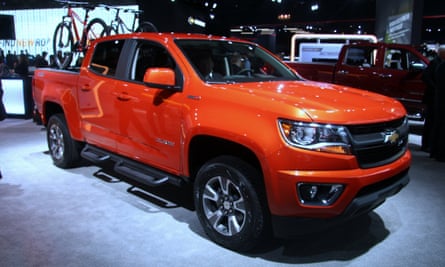
Nissan, not to be left out of the act of manly truck-flexing, introduced its redesigned Titan XD with a video that crowed: “When you see the front of this truck, you know something big is lurking under the hood.”
The something big under the hood is a turbo-diesel V8, but it doesn’t take much imagination to guess at the innuendo in Nissan’s marketing for the truck.
This kind of pitch appeals most to American men, and so automakers are selling “made in the USA” as a benefit. Carlos Ghosn, chief executive of Nissan, stressed at a press conference Monday that the Titan XD was designed, engineered and would be built in the United States. He also said that Nissan’s full-size pickup was aimed at potential customers who wanted the power of a heavy-duty pickup at the lower price of a lighter vehicle.
The midsize pickup trucks had been relatively stale since General Motors introduced its new US-market Chevrolet Colorado and GMC Canyon twins at the Los Angeles auto show in 2013.
But Toyota jumped into the fray, drawing back the cover on an all-new Tacoma for 2016. Toyota eschewed the huge grille displayed on GM’s midsize trucks in favor of a front fascia reminiscent of the Ford Fusion, or an Aston Martin. Toyota also stressed how American its truck is.
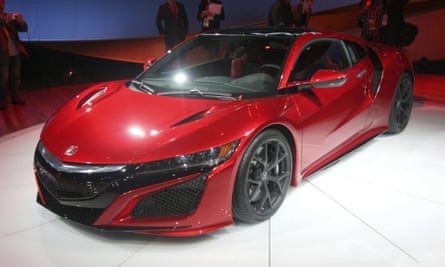
There was much talk about green technology in Detroit this week, but only a small amount of it was heard at Ford’s presentation. The automaker introduced the Shelby GT350R, a high-performance version of the new Mustang, and the Lamborghini-like GT supercar.
But first, Ford unveiled an expansion of its F-150 line, the latest edition of its offroad-tuned Raptor model. There seemed to be a collective sharp intake of breath from several corners of the room when Ford announced that the new high-performance truck would be V6-powered, but the automaker justified the move by calling the truck the “smartest” Raptor ever. Apparently in today’s world, even muscle trucks can be green.
Among the economy-oriented green vehicles displayed at the show, technology was key. Chevrolet led the green charge Monday morning, introducing a new Volt hybrid for 2016 and a surprisingly European-looking battery-electric concept called the Bolt, both of which were the recipients of new battery technology.
Acura managed to enter the supercar arena at the same time as it waded into the green pool with its new NSX. Like its aluminum-bodied predecessor, which was discontinued after 2005, the new NSX is V6-powered. But the new car is a hybrid.
Built from aluminum, carbon-fiber and other lightweight materials, the NSX is powered by a twin-turbo V6 and three electric motors. Put against the more conventional one motor, one engine hybrid setup – if there is such a thing – multiple electric motors has come to define the cutting edge of technology.
Dieter Zetsche, chairman of Daimler, Mercedes-Benz’s parent company, said at a press event Sunday that the automaker planned to have 10 plug-in hybrid models in its lineup by 2017. This week, Mercedes introduced one of them: the C350 plug-in hybrid, which the automaker said could travel up to 20 miles on a fully charged battery. Mercedes has not yet released fuel economy numbers for the car, but said the gasoline engine and electric motor, which combined produce 275 horsepower and 443 lb ft of torque, can launch it from zero to 60 mph in a scant 5.9 seconds, on the way to a top speed of 130 mph.
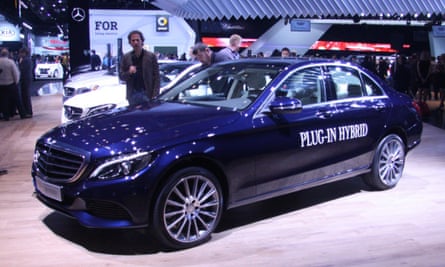
Mercedes also announced an electric version of its Smart Fortwo Flashlight edition, which it said had a range of about 90 miles.
Audi unveiled the plug-in hybrid Q7 e-tron Quattro crossover Monday. Again, no word on fuel economy numbers, but acceleration is relatively quick – the hybrid drivetrain propels the car to 60 mph in 6 seconds, and the top speed is 140 mph.
Hyundai said it would begin selling a hybrid model of its Sonata sedan in the spring and a plug-in hybrid version this summer. While the plug-in hybrid’s “normal mode” fuel economy numbers – 38 miles per gallon for the city and 43 miles per gallon for the highway – are slightly lower than the plain hybrid’s 39 city, 44 highway, the plug-in model boasts a 22-mile range.
In autos, when one model rises, another is sure to fall. This means slow times are ahead for that American stalwart, the midsize sedan.
Remember the days when the Ford Taurus and Toyota Camry were always neck and neck in the race for dominance of the US automotive market? That time is past.
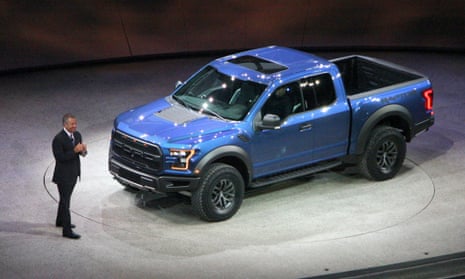
Comments (…)
Sign in or create your Guardian account to join the discussion